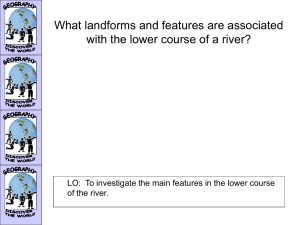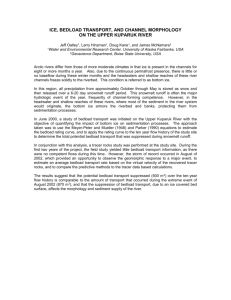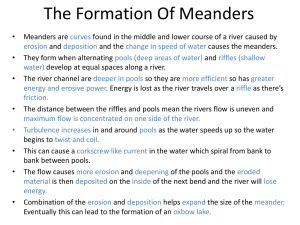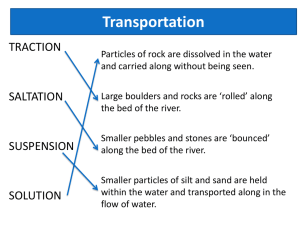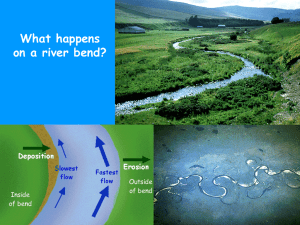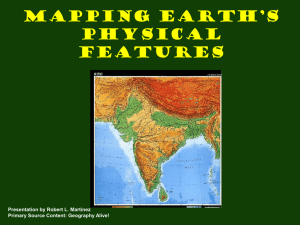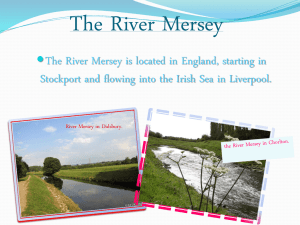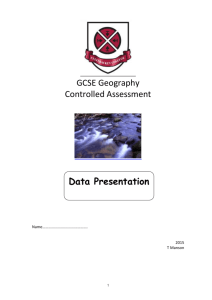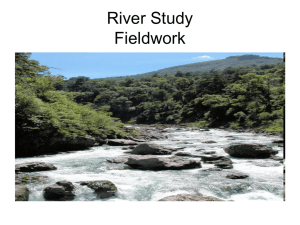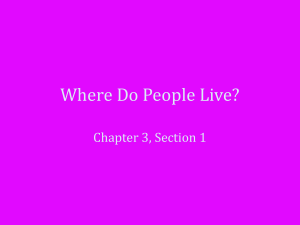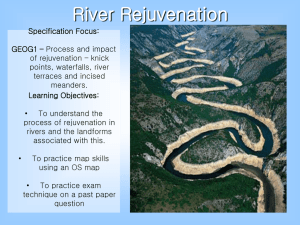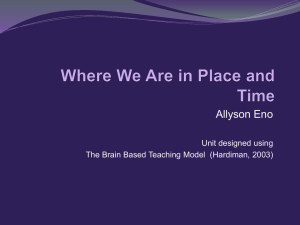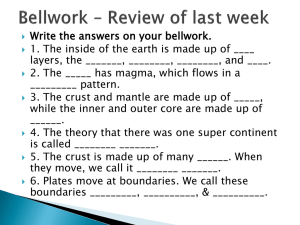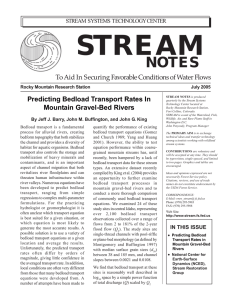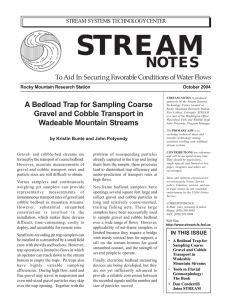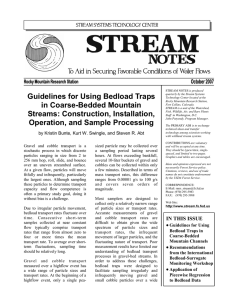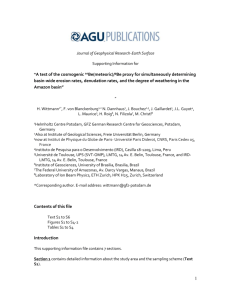Development of the Controlled Assessment task for 2015
advertisement
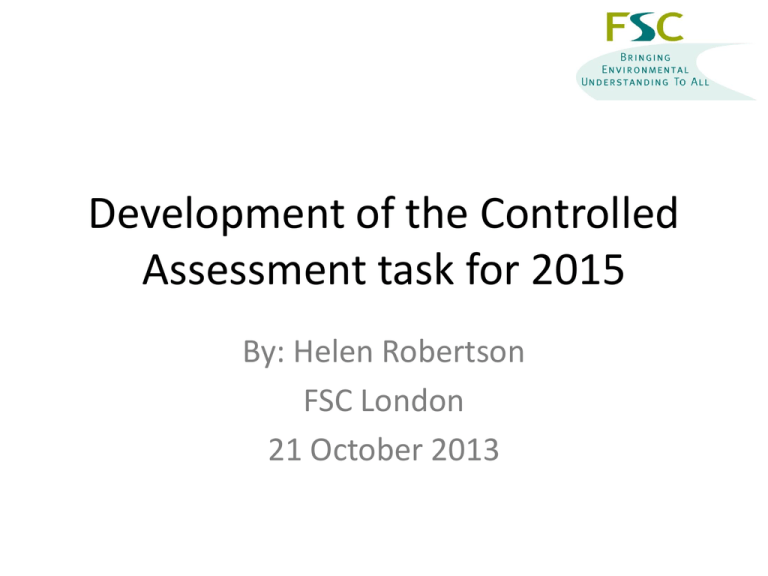
Development of the Controlled Assessment task for 2015 By: Helen Robertson FSC London 21 October 2013 • • • • • The Task What’s different? Making sense of the task statement The enquiry process Possible fieldwork techniques (primary & secondary data) • Potential investigations... Task Information An investigation into factors that affect the formation of river landform(s) • 1.1 What processes are associated with rivers? • 1.2 What landforms result from these processes? What’s different? • • • • More traditional than 2014 Not a classic ‘downstream change’ study Not river management Focus instead on processes e.g. – Erosion – Deposition – Transportation • Example – meanders Unpacking the title Must include primary data collection. A variety of secondary sources also available . Processes such as erosion, transportation and deposition. Distance downstream as a factor discouraged. An investigation into factors that affect the formation of river landform(s) Making the link between processes and landforms e.g. How increases in velocity might influence bedload size on a point bar or how the width of the channel may influence meander wavelength etc Meanders, associated features, channel and bankfull dimensions, floodplains, oxbow lakes, V-shaped valleys, waterfalls & gorges. The enquiry process • Involve the candidates in the enquiry process. – What are they aiming to achieve? – involve candidates in posing enquiry questions – What is the wider geographical concept / theory that is being tested? – How might candidates take some ownership for selecting or collecting data? How will they demonstrate independence? Location? London’s Lost Rivers http://strangemaps.wordpress.com/2008/06/05/284-londons-lost-rivers/ Location? Some suggestions… • a range of data collection techniques • opportunities for your students to meet the criteria in the mark scheme. Field sketches and photos • Scope for well annotated photos & sketches. • Combined with mapping to great effect. • Good opportunity to try less traditional ideas e.g. ‘a field sketch from the future or at bankfull discharge’ • Possible use of mobile technology Mapping of River Landforms • Annotate a base map • Online mapping software e.g. Google Earth, ArcGIS online; sketch map; Scribble maps Mapping of River Landforms • Hand drawn sketch map • Choropleth landforms • Historical Maps / Images • Geology Maps The Hjulstrum curve • Can processes occurring on a meander be linked to this theory? • Straight section vs a meander? • Pool vs a riffle? • Two sites with same width but a different depth? Bedload Measurements • Size and angularity assessments Bedload Measurements • Measuring any sorting of bedload on point bars possible. • Bedload size across a cross profile in a straight and meandering channel? Bankfull measurements • width and depth Valley profiles, sketches and photos • Link to geology? • Comparison of sides? Measurements of the landforms • Length and height of river cliffs • Gradients of slip off slopes • Both could be related to variables like water speed or channel width/depth Measurements of the landforms • Sinuosity = river length/linear distance Measurements of the landforms • Meander wavelength and amplitude • Does CSA of Bankfull C = CSA of Bankfull A + CSA of Bankfull B C A B Step pools and comparing gradients • • • • • Distance between steps? Height of steps? Bedload analysis? Site important... Comparison using slope angle possible… Channel measurements • eg velocity, depth, wetted perimeter, gradient etc • Can still be used.. But not downstream! – Comparison – One or two meander sites? • Compare with past data Example investigations • Comparison of a meander and a straight channel – channel shape, velocity, bedload etc • In depth study of a meander – dimensions, velocity, bedload, bankfull and associated features • The effect of channel characteristics on river cliff/point bar size and length • The effect of slope angle on step-pool or pool-riffle characteristics • Channel characteristics & their influence on meander wavelength/sinuosity • Channel A + Channel B = Channel C Investigation questions • How and why does the shape of the river channel affect the process of deposition? • How and why does the shape of the river channel affect the process of erosion? • How do meanders influence erosion? • How do meanders influence deposition? • The wavelength of a meander is greater where the river channel is wider. • How do meanders influence bedload size and/or shape? • Channel sinuosity increases with increased channel width/discharge. • Length/height of river cliff increases with increased velocity/discharge. Stream gradient influences ‘step-pool’ characteristics. Questions? • Contact: – Helen Robertson – FSC London – enquiries.ldn@field-studies-council.org – www.field-studies-council.org/london

